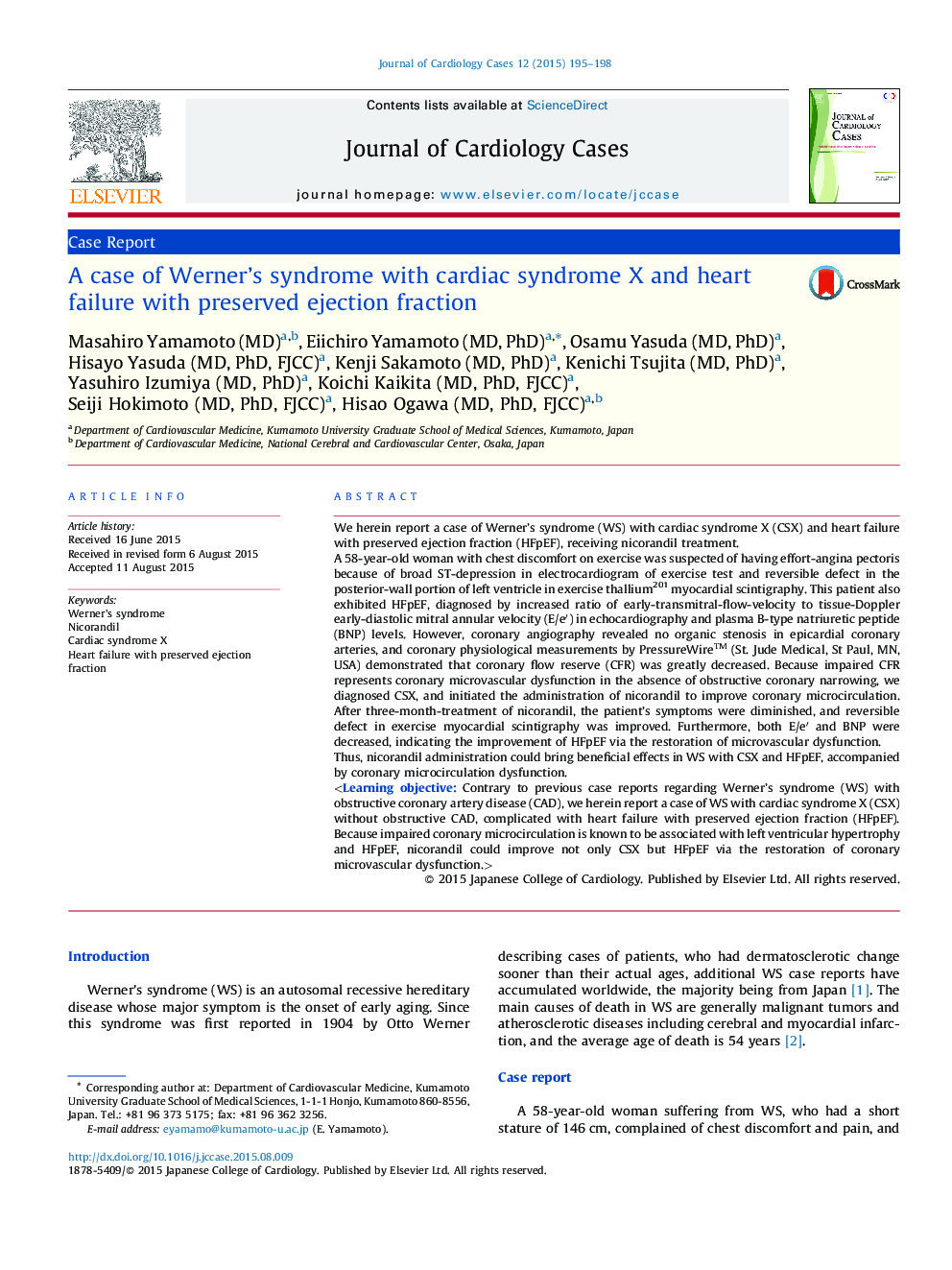| Article ID | Journal | Published Year | Pages | File Type |
|---|---|---|---|---|
| 5984410 | Journal of Cardiology Cases | 2015 | 4 Pages |
We herein report a case of Werner's syndrome (WS) with cardiac syndrome X (CSX) and heart failure with preserved ejection fraction (HFpEF), receiving nicorandil treatment.A 58-year-old woman with chest discomfort on exercise was suspected of having effort-angina pectoris because of broad ST-depression in electrocardiogram of exercise test and reversible defect in the posterior-wall portion of left ventricle in exercise thallium201 myocardial scintigraphy. This patient also exhibited HFpEF, diagnosed by increased ratio of early-transmitral-flow-velocity to tissue-Doppler early-diastolic mitral annular velocity (E/eâ²) in echocardiography and plasma B-type natriuretic peptide (BNP) levels. However, coronary angiography revealed no organic stenosis in epicardial coronary arteries, and coronary physiological measurements by PressureWire⢠(St. Jude Medical, St Paul, MN, USA) demonstrated that coronary flow reserve (CFR) was greatly decreased. Because impaired CFR represents coronary microvascular dysfunction in the absence of obstructive coronary narrowing, we diagnosed CSX, and initiated the administration of nicorandil to improve coronary microcirculation. After three-month-treatment of nicorandil, the patient's symptoms were diminished, and reversible defect in exercise myocardial scintigraphy was improved. Furthermore, both E/eâ² and BNP were decreased, indicating the improvement of HFpEF via the restoration of microvascular dysfunction.Thus, nicorandil administration could bring beneficial effects in WS with CSX and HFpEF, accompanied by coronary microcirculation dysfunction.
